PRESENTATION: The King Is Dead, Long Live The Queen
 Peggy Guggenheim was an art collector, gallerist, and patron of the arts. The legendary American is considered a pioneer and supporter of international avant-garde artists ranging from Max Ernst and Marcel Duchamp to Jackson Pollock. She, too, experienced her role as a woman in an expanding and male dominated art scene as ambivalent.
Peggy Guggenheim was an art collector, gallerist, and patron of the arts. The legendary American is considered a pioneer and supporter of international avant-garde artists ranging from Max Ernst and Marcel Duchamp to Jackson Pollock. She, too, experienced her role as a woman in an expanding and male dominated art scene as ambivalent.
By Dimitris Lempesis
Photo: Museum Frieder Burda Archive
“The King Is Dead, Long Live The Queen” is an exhibition of our time: Superman is thwarted and hits a wall, an oversized hybrid female hare offers motherly protection, a pair of seahorses switches traditional gender roles, and passion creates sparks. With a selection of contemporary works by thirty-one female artists of different generations and cultural influences, the exhibition at the Museum Frieder Burda presents exclusively female positions and their wide spectrum of themes. A primary example marking Peggy Guggenheim’s as a pioneer and supporter of international avant-garde more than qualified for this description is the her revolutionary “Exhibition by 31 Women” which she put on at her Art of This Century gallery just one year after its opening in New York City in 1942. One of the first ever exhibitions to exclusively showcase female artists, “31 Women” didn’t only perfectly match the socialite’s strive for the innovative in the art world, but also managed to secure contributions of artists from sixteen nationalities, amongst them the likes of Frida Kahlo or Meret Oppenheim. Marcel Duchamp, one of the key figures in twentieth-century art and a longtime friend of Guggenheim’s, advised her on the show. Duchamp, who was also a passionate chess player, provided the title and concept for the exhibition. As is well known, the queen is the most powerful figure in chess, while the king has a limited radius of action and depends on the other figures for protection. Contemporary critics reacted with reluctant admiration and condescending disregard. The verdicts culminated in a review by James Stern, the art critic of the influential magazine TIME, who rejected the exhibition since he had never seen a “first-class woman artist.” How wrong could a critic be”. When Guggenheim first put on “Exhibitions by 31 Women”, one journalist is said to have refused to cover the show for a big U.S. American magazine because he felt there were “no worthy women artists”. Fast forward approximately 70 years into the future, a survey in 2012 still stated that less than 5 % of the biggest permanent collections in museums of the U.S. and Europe are works of female artists, making gender based inequality in the art world still a distinctly relevant topic – and challenging this instance in the spirit of trailblazer Peggy Guggenheim all the more significant. The conceptual foundation of this historic exhibition is now taken up by “The King is Dead, Long Live the Queen”, which presents the work of thirty-one contemporary women artists who reflect on recent aesthetic, political and social transformations. These artists prove to be witnesses of their time their own voices, which are free and independent of the ideological debates that are so prevalent in the cultural environment. Udo Kittelmann, the curator of the exhibition and artistic director of the museum, has invited artists who were decisive both for him, personally, in his extensive career and in their own context. The presentation unites works from various disciplines, including painting, sculpture, film, sound, and installation. The works contribute to the overall narrative staging of the exhibition while also remaining focused as distinctive individual voices. Kittelmann explains, “The exhibition gives the works a voice and believes in their power and meaning, allowing some of them to be loud and others to assert themselves subtly and quietly.”
Patricia Waller is a textile artist from Santiago, Chile, who lives and works in Berlin, Germany. She is known for her bright cartoon style crochet work that often has a macabre element to it. Leiko Ikemura is a Japanese-Swiss artist who works in a variety of mediums, including oil painting, sculpture, and watercolor. She currently divides her time between Cologne and Berlin, teaching painting at the Hochschule der Künste in Berlin. Active on the international art scene since the 1970s, she is known for her work within the Neo-Expressionism movement of the 1980s, as well as her continually evolving style. Leda Bourgogne’s artistic work is characterized by an interest in psychoanalysis, philosophy, literature, and feminist thought. In her object-like paintings, poems, performances, and sculptures, she interrogates the nature of nonconformist desires as well as the inseparability of intimate and public, political and private spaces. As Roey Victoria Heifetz self-identifies as a transgender woman, she uses images of strong and older women to expose the painful discrepancy between social expectations and the physical reality of changing and growing old as a woman. At the same time, the works allow her to imagine her own future as she moves closer to her female body. This is expressed in large-format drawings which explore the long psychological and emotional journey taken, and the implications of this momentous change of transitioning from a man to a woman. Known for her colorful, large-scale compositions, Kerstin Brätsch uses oil paint and a range of other materials to explore the nature of painting in the digital age. From her signature paintings—many of which resemble geodes or marbled surfaces—to her installations and performances, Brätsch’s work explores collaboration, the circulation of images, and the role of chance in image-making. The American artist Sturtevant is best known for her repetitions of the works of other artists, which she recreated manually from memory after having seen a piece that intrigued her. These can immediately be identified with the original, but they are not copies. Her aim was not to achieve an exact replica, but rather to address notions of authorship, authenticity and originality that would later come to the fore in our own digital age, characterised by the endless circulation and recombination of images. Tania Bruguera is an artist and activist who focuses on installation and performance art. She lives and works between New York City and Havana. Bruguera’s work pivots around issues of power and control, and several of her works interrogate and re-present events in Cuban history.[3][4] As a result of her artistic actions and activism, Bruguera has been arrested and jailed several times. Anne Imhof has emerged over the past decade as one of the most acclaimed artists of her generation. Today based between Berlin and New York, Imhof spent her formative years in Frankfurt am Main, where she taught herself to draw and make music while working as a bouncer at a local night club. Before eventually enrolling at the city’s academy of fine arts, Städelschule, she staged what she later designated the first entry to her catalogue raisonné: a one-night only performance in a red light district bar. She invited two boxers to take part and recruited a band. The boxers were told that the fight should last for as long as the music was playing, while the band were instructed to play for as long as the boxers were fighting. Imhof explained: “It was all pretty red—the table dance bar and the noses. Looking back on it I realized that it had been one way to create a picture.”
Works by: Hiba Alansari, Thuraya Al-Baqsami, Monira Al Qadiri, Rosa Barba, Alexandra Bircken, Monica Bonvicini, Leda Bourgogne, Kerstin Brätsch, Tania Bruguera, Ceal Floyer, Galli, Asta Gröting, Roey Victoria Heifetz, Almut Heise, Leila Hekmat, Leiko Ikemura, Anne Imhof, Annette Kelm, Conny Maier, Heidi Manthey, Beatriz Morales, Sara Nabil, Helga Paris, Adrian Piper, Lin May Saeed, Karin Sander, Julia Scher, Marianna Simnett, Sturtevant, Rosemarie Trockel, Patricia Waller
Photo: Leiko Ikemura, Usagi Greeting, 2021. Museum Frieder Burda, Baden-Baden © Leiko Ikemura and VG Bild-Kunst, Bonn 2023; Photo: Nikolay Kazakov
Info: Curator: Udo Kittelmann, Museum Frieder Burda, Lichtentaler Allee 8b, Baden-Baden, Germany, Duration: 13/5-8/10/2023, Days & Hours: Tue-Sat 10:00-18:00, www.museum-frieder-burda.de/
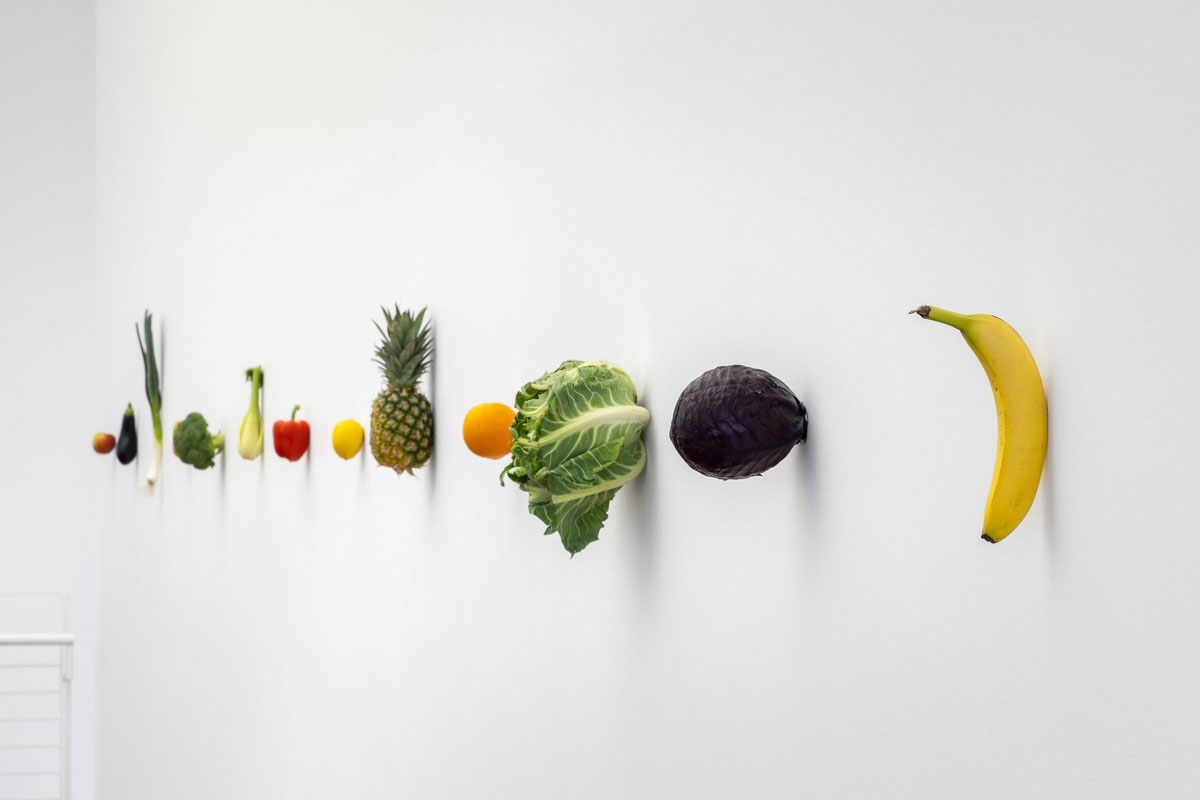
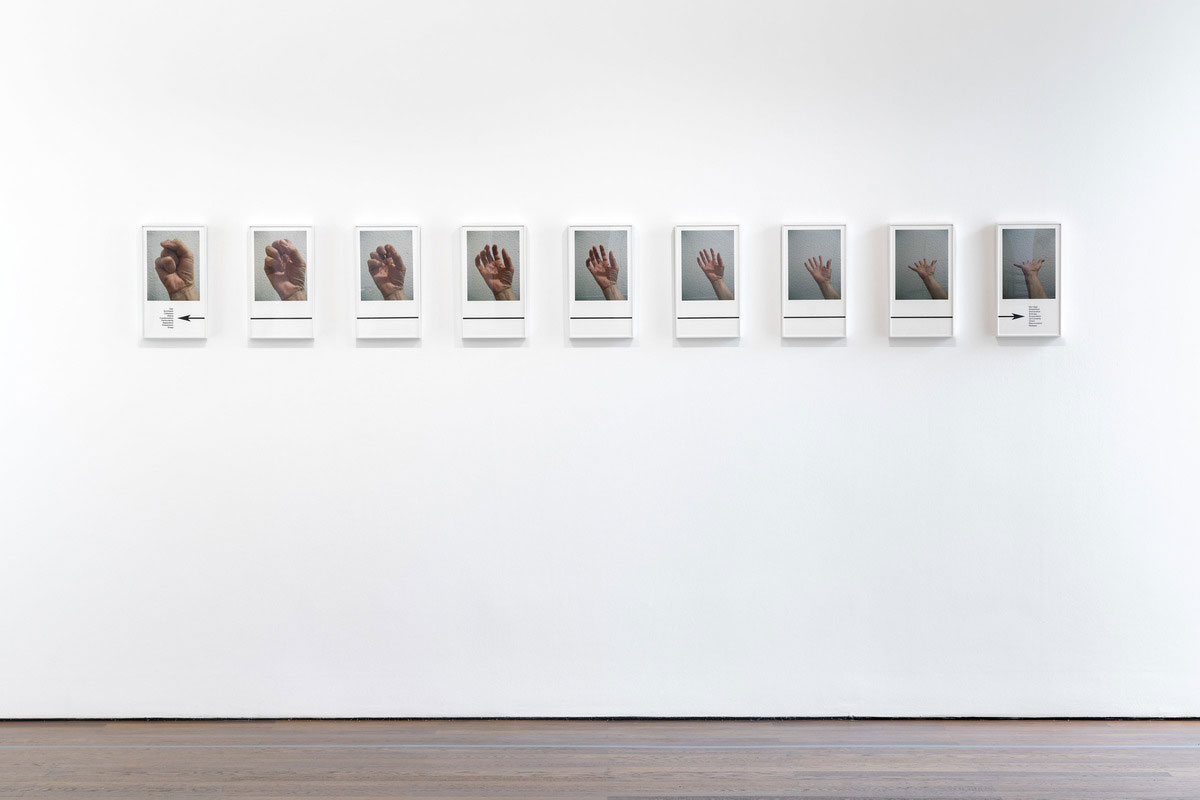
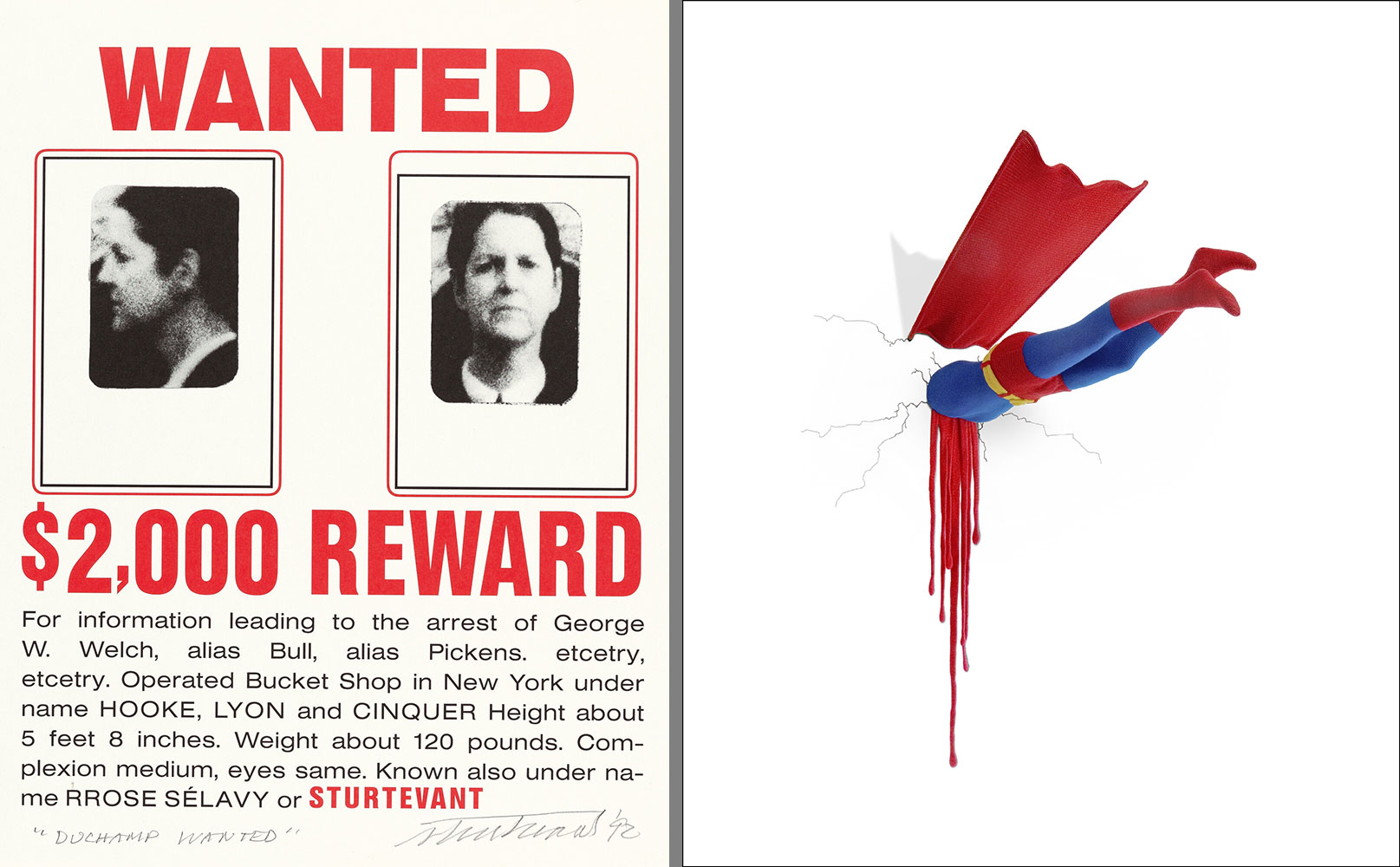
Right: Patricia Waller, Untitled (Superman), 2011 Wool, styrofoam, wire, crochet, 120 x 60 × 50 cm Courtesy of Galerie Deschler, Berlin © VG Bild-Kunst, Bonn 2023
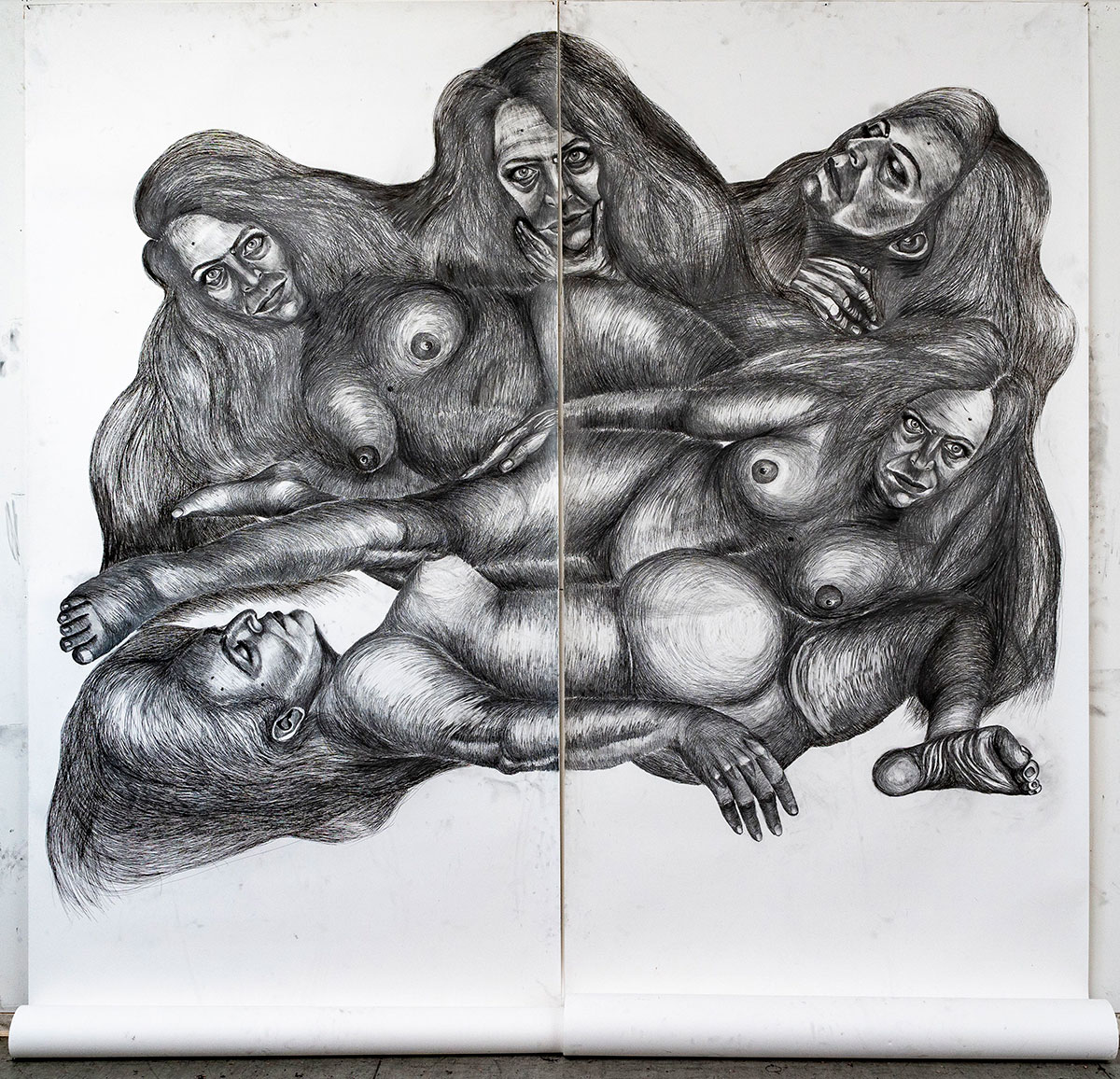
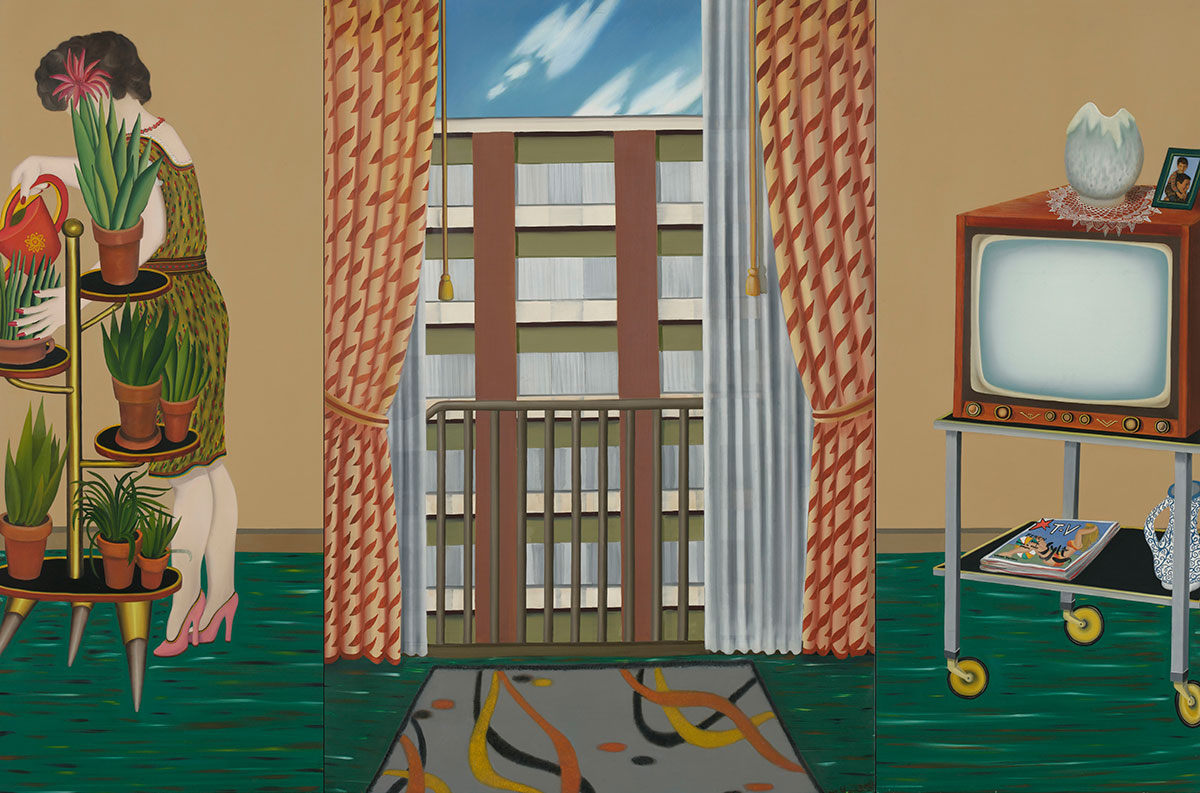
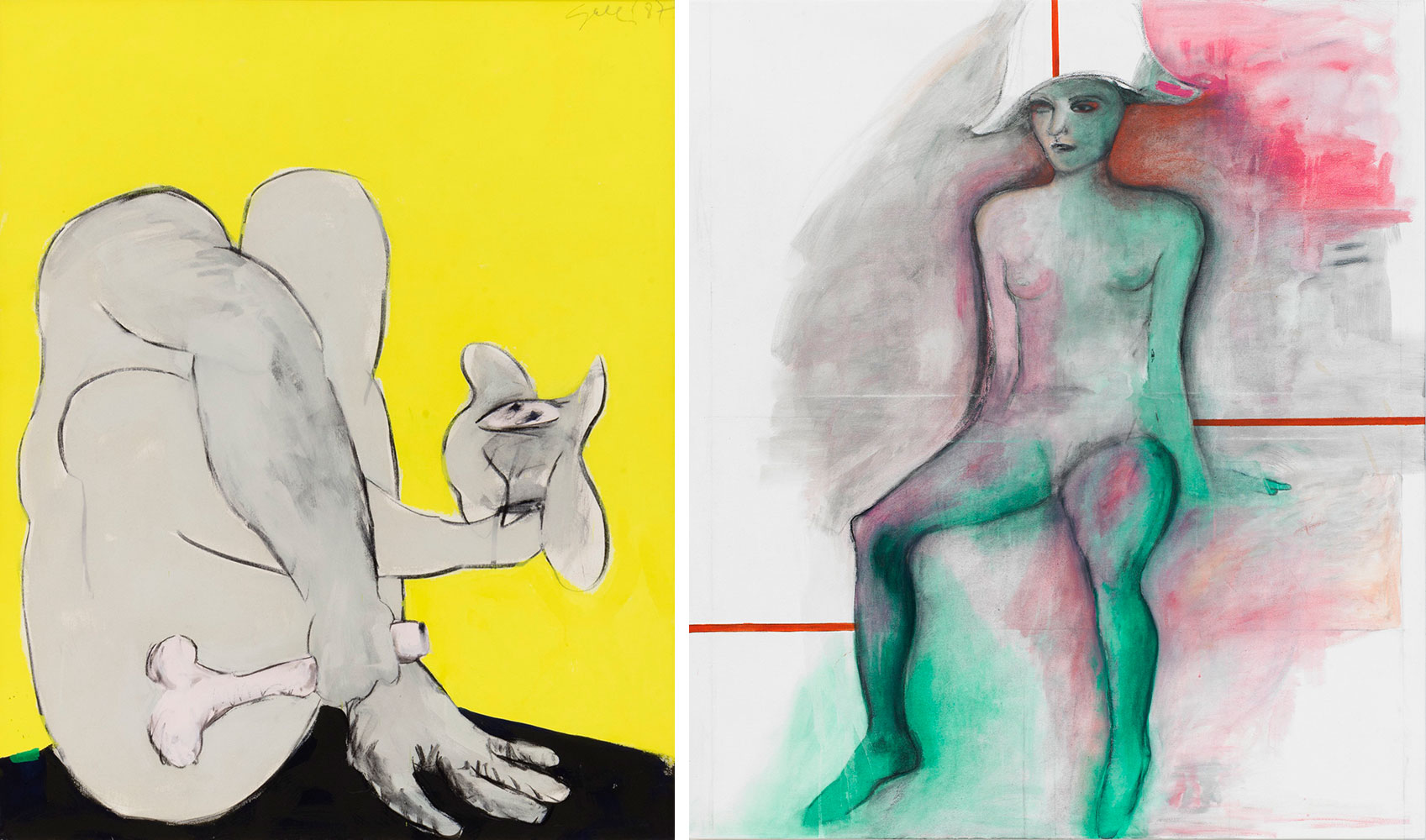
Right: Leda Bourgogne, Eccomi, 2018 Pencil, charcoal, acrylic on canvas, 125 x 110 x 3 cm Private Collection © Leda Bourgogne; photo: Roman März, Berlin
